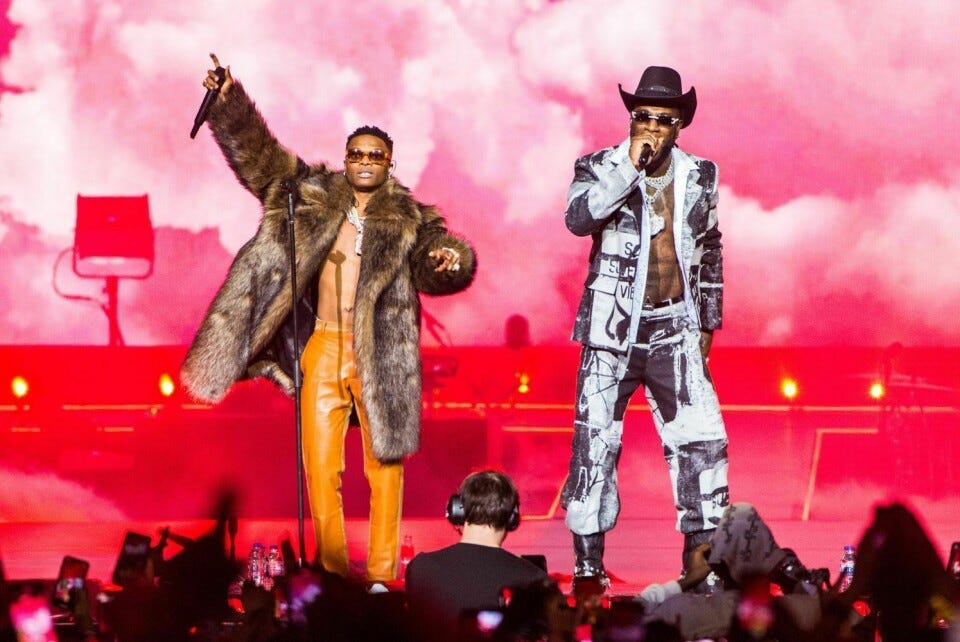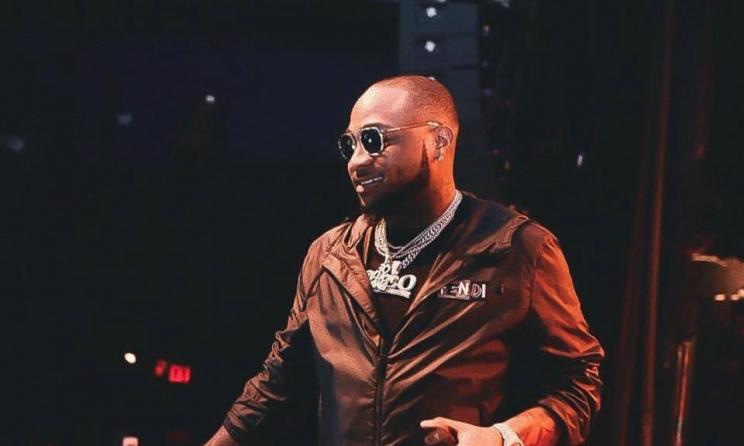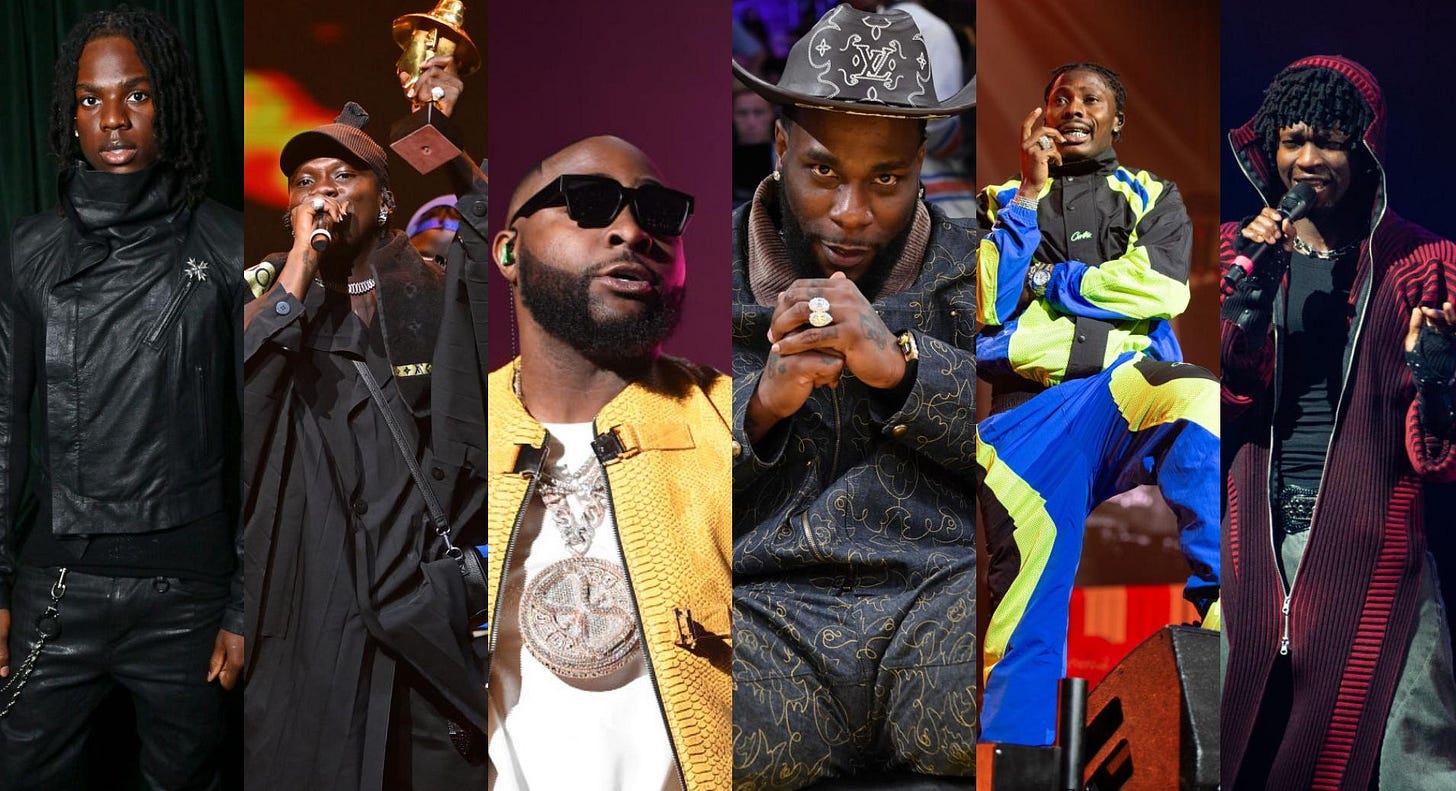The Real Money Isn’t Online: Why African Artists Still Tour to Survive
Streaming changed everything about how African music is discovered. It gave artists global reach, grew listenership in places that once felt invisible to the continent, and made Afrobeats a household sound from Lagos to Lima. But for most artists, the economics of digital attention still don’t pay the bills. The real revenue — the cash that builds teams, funds albums, and pays crews — still comes from the stage.
This is the story of two economies: the stream economy that builds fame, and the live economy that pays for lives. Both matter, but they work very differently. Here’s how.
Visibility vs. Viability
In the streaming era, African acts can achieve global visibility without leaving their neighbourhood studios. Spotify’s recent reporting shows Afrobeats made huge inroads in Latin America, with listenership in the region growing 180% year-on-year in 2025, and multi-year growth of roughly 400–500% in Argentina, Mexico and Brazil since 2020. That’s reach on an industrial scale.
At the same time, Spotify’s royalty reporting shows real progress in payouts to African creators: Nigerian and South African artists together earned about $59 million on Spotify in 2024 — a meaningful increase year-on-year. But it’s important to read that number in context: Spotify paid $10 billion globally in royalties that same year. Africa is growing fast, but it’s still a small slice of a very large pie.
Why does that matter? Because streams don’t pay the same everywhere. On average, Spotify’s per-stream payout sits around $0.003–$0.005, and that rate varies by market, subscription mix and licensing splits. A million streams in a high-value market generate far more income than a million streams in a lower-ad market. For many African creators that gap translates into a big disparity between global fame and local pay.
So artists have learned the same hard lesson the rest of the music business learned long ago: audiences are not the same as income streams.
Why Touring Still Pays
The math of live music is straightforward: tickets + merch + VIP experiences + sponsorships = real cash. For top-tier African artists touring internationally, the numbers are substantial.
Take Burna Boy. His international tours — Love, Damini and I Told Them — registered some of the highest-grossing arena performances by African artists, with multiple reports citing seven-figure grosses on individual arena nights and multi-million-dollar totals across U.S., Canada and Europe legs. Local outlets and touring data reported I Told Them grossing in the low-to-mid tens of millions from reported dates, making it among the most lucrative African artist tours in recent memory.
Asake’s rise tells a similar story, but from a different angle: he sold out the O2 Arena in London, twice, a rare feat that translates into immediate revenue and global branding. Promoters and ticket platforms reported rapid sell-outs for those shows, underscoring how live demand often outstrips streaming income for even rapidly rising artists.
Davido’s North American shows have also produced seven-figure single-show grosses, with recent reporting indicating strong returns on initial North American stops. These headline tours do more than move units — they create high-margin revenue streams from sponsorships, VIP packages and merchandise, the kinds of earnings streaming rarely matches for African acts.
Put bluntly: touring scales money in a way streaming still rarely does for African creators. That’s why top artists prioritize tour routes and festival slots, even as they chase streams.
The Emotional Economy: Why Artists Want to Tour
Money explains part of the touring logic; emotional currency explains the rest. For many artists, touring is about connection.
Creators often speak about the difference between an algorithmic “play” and the heat of a crowd. Live shows allow artists to confirm that the people behind the streams are real, to test new material, and to experience the cultural feedback that shapes future creative choices. For diaspora communities, concerts are reunion points. That closeness is a form of return that streaming can’t replicate.
So when artists go on tour, they’re not only cashing a cheque, they’re reaffirming audience relationships, building long-term loyalty and making the intangible work of culture real. That loyalty then feeds back to streams, merch buys, and higher ticket demand on future tours. This is a loop that makes live shows critical to artistic careers.
The Cost of the Stage: Why Touring Isn’t Cheap
But let’s be honest: touring is expensive, risky and complex especially for shows that cross continents.
Costs that eat into artist revenue include:
Production and crew: sound, lighting, stage design, technicians, dancers. Touring crews are not cheap, and international legs require additional hiring or travel expenses.
Logistics and travel: flights, freight for equipment, visas, accommodation. Inconsistent flight routes in and out of Africa can multiply costs.
Promotion and promoter risk: promoters often shoulder the upfront costs, but if a show underperforms, artists can absorb losses through guarantees or shared revenue deals.
Taxes and currency exchange: cross-border taxation rules and exchange rate volatility can reduce net receipts for artists repatriating earnings.
Venue and government red tape: permit delays, customs for equipment, and sometimes unpredictable local costs (power, security, last-mile logistics).
For emerging artists, these barriers are often insurmountable without outside funding. Even mid-tier acts must be strategic, partnering with promoters who understand cross-market logistics or relying on local partners in diaspora markets to underwrite risk.
Who Funds Tours? The Money Behind the Curtain
Tours are financed through combinations of the following:
Promoters and ticketing companies. In many markets, promoters underwrite guarantees or assume financial risk for shows. In mature markets, promoters provide production and marketing in exchange for a share of ticket revenue. In Africa and for diaspora shows, promoters can be individual entrepreneurs or specialized companies that connect artists to venues.
Brands and sponsors. Telecoms, beverages and banks have long been the big underwriters of African music events. In Nigeria and Ghana, brands such as MTN, Guinness, and local banks actively sponsor festivals and tour legs, offsetting a significant portion of costs while linking themselves to cultural capital. MTN, for example, runs performing arts sponsorships and other music partnerships across the continent. That funding is critical.
Diaspora promoters and community hosts. In cities such as London, Toronto or Houston, local diaspora promoters front shows because they understand the market and can reliably sell tickets. That grassroots promoter network is a lifeline for many African acts. Often, these promoters are community businesses that reinvest returns into future shows.
Artists and labels. Particularly for major artists, labels and artist investment funds will finance tour production, viewing it as a strategic investment in the artist’s brand and future catalog value. Some artists also self-finance parts of tours, especially when they expect high returns from premium ticketing and VIP packages.
Government and festival bodies. National arts councils and festival grants sometimes underwrite cultural tours, but funding is inconsistent across African markets. Compared to European or Latin American arts funding, African public investment in music export remains limited.
That mix explains the practical reality: only a few artists can tour purely on streaming revenue. Most tours need underwriters, brands, promoters, or investors, to make the math work.
Streaming Data Is Now Guiding Tour Strategy
There’s a bright side to the streaming era: data helps artists tour smarter.
Platforms like Spotify for Artists and Apple Music for Artists give detailed geography and demographic breakdowns like who’s listening, where, and how often. Managers use those heat maps to decide which cities to test, where to spend promo dollars, and which neighborhoods in diaspora cities to target with localized campaigns.
This is how Rema’s teams, for example, decide when to try a Latin American city or how Wizkid’s team maps U.S. markets. That integration of digital intelligence with physical routing has made touring more surgical and less speculative. In short, streams have become reconnaissance for the live economy.
The Middle Class of Music: Merch, VIPs, and Hospitality
Streaming may underpay, but tours create other monetizable moments. High-margin revenue often comes from:
Merchandise: shirts, limited editions, physical albums and memorabilia move well at shows.
VIP/meet-and-greet packages: fans pay premium prices for proximity experiences.
Hospitality and curated events: after-show parties, private performances, brand dinners.
Sync and licensing deals: live exposure can push songs into TV and film sync deals, which pay significantly more per usage than streaming.
Together, these revenues can turn a stadium night into weeks of income that far exceeds what streaming could generate for the same songs.
Inequality in Opportunity: Who Gets to Tour?
Not every artist has the same touring options.
Top-tier superstars like Burna Boy, Davido, Wizkid, Asake, sell arenas and command sponsorships. Middle-tier acts can fill theaters or large clubs, often in diaspora markets. Emerging artists frequently rely on festival slots or local circuits.
Barriers to more equitable touring include:
High upfront costs that lock out artists without backing.
Visa complications that delay or cancel tours for African artists.
Limited regional circuits — while Europe and North America have dense touring networks, intra-African touring infrastructure (reliable venues, consistent promoters, standardized ticketing) is still developing.
Fixing those gaps like better visa support, touring funds, regional venue networks could democratize touring opportunity across the continent.
Hybrid Models: When Streaming and Touring Meet
The future is not streaming or touring, it’s streaming and touring, fused in new ways.
Hybrid models include:
Live-streamed concerts with ticketed virtual access, expanding the audience without physical logistics.
Phygital ticketing (ticket + NFT collectibles or merch drops).
Market-specific content released ahead of tours to build local demand.
Microsponsorships where local businesses underwrite single-city shows, building community ecosystems.
These models make touring less binary and more resilient, letting artists monetize both presence and pixels.
What Needs to Change: Policy, Infrastructure, and Ownership
To make touring viable for more artists, and to let streaming revenues convert into sustainable income, three structural shifts are urgent:
Policy and visa reform. Simplified visa processes for artists and touring professionals can reduce cancellations and costs. Governments that support cultural exports through fast-track artist visas unlock significant economic value.
Regional touring infrastructure. Investment in standardized ticketing, venue upgrades, and freight logistics would reduce costs and make intra-African tours feasible at scale.
Data and payment infrastructure. Better access to streaming analytics, improved royalty collection mechanisms, and fintech solutions that simplify cross-border payouts will ensure artists actually receive their earnings.
These are not small asks. But they are practical levers. The kinds of changes that turn exposure into equity.
Conclusion: The Stage Is the Last Honest Market
Streaming rewired attention. It made African music discoverable and popular on a scale once unimaginable. But attention alone does not pay crews, fund albums, or create sustainable careers. The stage still does that.
Touring is messy and expensive. It is also the closest thing the music industry has to a guaranteed revenue machine for artists who can access it. If African governments, platforms, brands and investors want a thriving creative economy, they must treat touring as infrastructure and act accordingly.
Because in Africa’s creative economy, fame may begin with a stream, but stability still begins under the lights.
A guest post by
A curious mind exploring the crossroads of creativity and insight.






